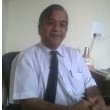Practice query
 Sumit Gupta
(Querist) 09 April 2012
This query is : Resolved
Sumit Gupta
(Querist) 09 April 2012
This query is : Resolved
Hello sir/madam,
kindly tell me it is advisable or not; whether the court has the court has the right to forward the photocopy of document for the opinion and assitance of hand writing expert?
if yes kindly cite some authories........
 Nadeem Qureshi
(Expert) 09 April 2012
Nadeem Qureshi
(Expert) 09 April 2012
Dear Sumit
if the court admit, photocopies of documents as a documentory evidence only when the court have right to forword the photocopy of document for the opinion and assistance of hand writing expert.
because photocoppy of the document is comes under secondary evidence as per section 63 of Evidence act, 1872
63. Secondary Evidence -
Secondary evidence means and includes.
1. Certified copies given under the provisions hereinafter contained;
2. Copies made from the original by mechanical processes which in themselves insure the accuracy of the copy and copies compared with such copies;
3. Copies made from or compared with the original;
4. Counterparts of documents as against the parties who did not execute them;
5. Oral accounts of the contents of a document given by some person who has himself seen it.
Illustrations
(a) A photograph of an original is secondary evidence of its contents, though the two have not been compared, if it is proved that the thing photographed was the original.
(b) A copy compared with a copy of a letter made by copying machine is secondary evidence of the contents of the letter, if it is shown that the copy made by the copying machine was made from the original.
(c) A copy transcribed from a copy, but afterwards compared with the original, is secondary evidence, but the copy not so compared is not secondary evidence of the original, although the copy from which it was transcribed was compared with the original.
(d) Neither an oral account of a copy compared with the original, nor an oral account of a photo graph or machine copy of the original, is secondary evidence of the original.
COMMENTS
Admissibility
Application moved for permission to lead secondary evidence based on ground of loss of document. Presence of document proved from the facts pleaded - Allowing secondary evidence not illegal; Sobha Rani v. Ravikumar, AIR 1999 P&H 21.
Tape-recorded statements are admissible in evidence; K.S. Mohan v. Sandhya Mohan, AIR 1993 Mad 59.
Certified copies of money lender’s licences are admissible in evidence;
K. Shivalingaiah v. B.V. Chandrashekara Gowda, AIR 1993 Kant 29.
-----------------------feel free to call
 Nadeem Qureshi
(Expert) 09 April 2012
Nadeem Qureshi
(Expert) 09 April 2012
Dear Sumit
if the court admit, photocopies of documents as a documentory evidence only when the court have right to forword the photocopy of document for the opinion and assistance of hand writing expert.
because photocoppy of the document is comes under secondary evidence as per section 63 of Evidence act, 1872
63. Secondary Evidence -
Secondary evidence means and includes.
1. Certified copies given under the provisions hereinafter contained;
2. Copies made from the original by mechanical processes which in themselves insure the accuracy of the copy and copies compared with such copies;
3. Copies made from or compared with the original;
4. Counterparts of documents as against the parties who did not execute them;
5. Oral accounts of the contents of a document given by some person who has himself seen it.
Illustrations
(a) A photograph of an original is secondary evidence of its contents, though the two have not been compared, if it is proved that the thing photographed was the original.
(b) A copy compared with a copy of a letter made by copying machine is secondary evidence of the contents of the letter, if it is shown that the copy made by the copying machine was made from the original.
(c) A copy transcribed from a copy, but afterwards compared with the original, is secondary evidence, but the copy not so compared is not secondary evidence of the original, although the copy from which it was transcribed was compared with the original.
(d) Neither an oral account of a copy compared with the original, nor an oral account of a photo graph or machine copy of the original, is secondary evidence of the original.
COMMENTS
Admissibility
Application moved for permission to lead secondary evidence based on ground of loss of document. Presence of document proved from the facts pleaded - Allowing secondary evidence not illegal; Sobha Rani v. Ravikumar, AIR 1999 P&H 21.
Tape-recorded statements are admissible in evidence; K.S. Mohan v. Sandhya Mohan, AIR 1993 Mad 59.
Certified copies of money lender’s licences are admissible in evidence;
K. Shivalingaiah v. B.V. Chandrashekara Gowda, AIR 1993 Kant 29.
-----------------------feel free to call
 Nadeem Qureshi
(Expert) 09 April 2012
Nadeem Qureshi
(Expert) 09 April 2012
You can read below mention judgement
Subarna Barik v. state, AIR 1976 Orissa 236
Subarna Barik vs The State Of Orissa And Ors. on 25 June, 1976
Equivalent citations: AIR 1976 Ori 236
Author: R Misra
Bench: R Misra
JUDGMENT
R.N. Misra, J.
1. On 21-3-1965, the Tahsildar of Cuttack (defendant No. 4) published a notice inviting intending bidders for allotting of the Sairat, namely the sole and exclusive right to hold a canteen, betel shop and cold drinks stall within the premises of the Cuttack Collectorate for the year 1965-66, i.e. 1st April, 1965 to 31st of March, 1966. The auction was held on 31-3-1965 and there were many bidders including the plaintiff. The bid given by the plaintiff at Rs. 16,200/- was the highest and was accepted. The plaintiff deposited a sum of Rs. 6,050/- out of the bid money and was put into possession of the canteen located within the Collectorate. Plaintiff found that in violation of the monopoly right conferred under the auction sale, several unauthorised vendors were permitted to open stalls within the premises of the Collectorate which very much adversely affected the plaintiff's business. Plaintiff represented to the public authorities and demanded that the monopoly conferred on the plaintiff should be protected but adequate steps were not taken in that behalf. When plaintiff demanded execution of a formal contract specifically providing for the monopoly right of the plaintiff, defendants were not agreeable to incorporate the said clause. Plaintiff was called upon to pay the balance money. Therefore, on 21-1-1966, the suit was filed asking for a decree directing the defendants to enter into a covenant of lease with him with a specific clause providing for the monopoly right as aforesaid and for a decree for recovery of damages of Rupees 12,550/- and for permanent injunction against the defendants restraining them from interfering with plaintiff's right till 31st of March, 1966, to carry on the business.
2. All the defendants filed a joint written statement. Defendants denied that any monopoly right was intended to be conferred on the plaintiff in the matter of selling confectionary articles within the area nor had they undertaken any obligation to protect such alleged right of the plaintiff. They denied that plaintiff suffered any loss as a fact. Plaintiff's claims were also otherwise refuted as not tenable in law.
3. The learned Additional Subordinate Judge came to hold:--
(i) although there was no written contract, the conduct of the Tahsildar (defendant No. 4) and the facts stated in other documents exhibited in the case indicated unquestionably that it was the duty of the defendants to stop vending within the Collectorate building by others;
(ii) plaintiff had signally failed to prove that he had sustained any loss in the matter on account of mala fides of the defendants; and
(iii) if plaintiff had succeeded in establishing the mala fides as alleged, he would have been entitled to damages of Rs. 3,600/- relating to the period between 1-4-1965 and 30-7-1965.
The suit was ultimately dismissed. Plaintiff has carried this appeal against the aforesaid decrees.
4. According to Mr. Mohanty for the appellant, once the learned trial Judge held that it was a part of the arrangement that the plaintiff would have monopoly right of vending within the Collectorate, the defendants should have been made liable on account of their default in ensuring the monopoly right. Admittedly there is no contract. Therefore, the monopoly right claimed by the plaintiff has to be gathered only from other materials. Plaintiff has placed reliance on a photostat copy of a letter written by the Tahasildar (defendant No. 4) to the Additional District Magistrate Ext. 7. Therein, it has been stated:--
"The canteen within the Kuchery compound has been leased out to one Subarna Barik (plaintiff) for the year 1965-66 and he is to exercise sole monopoly over sale of tea, tiffin, pan, sarbat etc. Within the Kuchery premises ....."
In that very letter, there is a statement that employees of the different sections of the Collectorate have been catering to the needs of their respective offices. Therefore, the Tahsildar drew the attention of the Additional District Magistrate by writing the letter and indicated that if such vending did not stop, the plaintiff may claim remission in the lease amount On 19th of June, 1965, the Tahsildar wrote a letter to the President of the Criminal Bar Association objecting to an outsider opening a tea and tiffin stall within the Bar Library, Ext. 8. Ext. 9 is a photostat copy of a letter written by the Additional Civil Supplies Officer to the Tahsildar dated 1-7-1965. Therein, the allegation made by the Tahsildar under Ext. 7 has been refuted by saying:--
"..... I am to inform you that on enquiry it reveals that no office peons have opened any shops in this office. The peons who are actually supplying pan and tea have not opened any shop but are ensuring the supplies to the staff who have subscribed themselves for the same in order to have a better stuff than that supplied by the lessee."
Relying on Exts. 7, 8 and 9 and the oral evidence on the plaintiff's side, the learned trial Judge bad come to hold that it was one of the stipulations of the auction that plaintiff would have monopoly right of vending. Learned Advocate General for the respondents claims that these documents should not have been exhibited as they have not been duly proved. These documents appear to be photostat copies. Their admissibility into evidence was disputed and they have been marked as exhibits after objections were overruled. Plaintiff examined as P. W. 3 stated:--
"I have got photostat copies of the letter written by the Tahsildar, Cuttack, to A.D.M. The photo of this letter was taken in the office of Tahsildar, Cuttack, with the permission of the Tahsildar. A photographer was brought by me. He had a temporary photo studio at Chourhury Bazar Park. He has gone away from Cuttack. I could not trace him. He took the photo in my presence from the file. This is the photo and these are the signatures Exts. 7 and 7/A (objected to on account of non-examination of the photographer and because the deponent has no idea of photography; objected also on the ground of late filing). I called for the original of all these documents from the Tahsildar, Cuttack, and other defendants, but they did not produce the originals. Hence I have filed the photostat copies."
In cross-examination, he further stated:--
".....The clerks were present when the photographer took photos. Under the instruction of the Tahsildar, I took the photos in the ground floor in presence of the Dealing Assistant ..... I do not know the name of the photographer. I know him by face only....."
On the basis of this evidence, there may have been difficulty to accept the documents as genuine. But the very Tahsildar has been examined as a witness on the defence side and there is no denial by the Tahsildar of the evidence given by the plaintiff. On the other hand, the Tahsildar has accepted the signature on the document (Ext. 7) to be his. The learned trial Judge was, therefore, right in rely- ing upon these letters.
Ext. A is the notice issued by the Tahsildar for the auction. Therein, there is no mention that any monopoly right would be conferred. In fact, if any monopoly right was intended to be given, one would have expected mention thereof in Ext. A.D.W. 1 joined as Tahsildar on 10-5-l965 and the auction had been made on 31-3-1965 by the Sub-Divisional Officer before D. W. 1 had joined. Non-mention of this fact in Ext. A goes a long way to dispel the plaintiff's assertion. The Tahsildar (D. W. 1) after joining on 10-5-1965 appears to have become the greatest supporter of the plaintiff. In the absence of any official communication and he not having been a party to the auction, the Tahsildar had no basis for being of the view that monopoly rights had been conferred on the plaintiff.
5. Conferring of monopoly right is very different from ensuring that there is no other vendor operating in the same area. It is not the plaintiff's case that any other person was given the right of vending by the defendants. According to him, certain other persons were either clandestinely or unauthorisedly carrying on vending. Unless defendants had any obligation to ensure that monopoly right, if any, conferred on the plaintiff was interfered with they had no responsibility in the matter. It was open to the plaintiff to work out his rights on the footing that monopoly rights had been conferred on him of vending within the defined area. Thus I find it difficult to accept the finding of the learned Subordinate Judge that monopoly right as such had been conferred on the plaintiff and even if such right had been conferred, I also find it difficult to hold that defendants had any obligation to uphold plaintiff's right.
6. Plaintiff based his action on mala fides of the defendants. That is why Issue No. 5 was framed on the following term:--
"Did the plaintiff suffer any loss by the deliberate and mala fide action of the defendants ?"
The learned trial Judge has found against the plaintiff under this issue. Though learned counsel for the appellant contended that the finding was wrong, I have not been persuaded to take a different view. There is no documentary evidence to support the plea of mala fides. Plaintiff has examined three witnesses in all including himself. P.W. 1 is a contractor while P.W. 2 is an advocate. Both of them appear to have been examined for the purpose of showing the turnover and the quantum of loss. Thus there is no evidence worth the name to establish deliberate mala fides of the defendants. On the other hand, when the Tahsildar moved the Additional District Magistrate under Ext. 7, the latter appears to have passed an order to afford protection to the plaintiff without examining whether plaintiff was entitled to such protection. When the Talsildar sent a copy of Ext. 7 to the Civil Supplies Officer, the Civil Supplies Officer hastened to write back that there was no shop running within his section of the Collectorate as alleged in Ext. 7, Defendants appear to have proceeded to protect the supposed right of the plaintiff as and when moved. In the circumstances, the finding seems to be wholly justified and I would reiterate the finding by saying that the plaintiff has failed to establish any deliberate and mala fide action of the defendants leading to his loss.
7. On these findings, the plaintiffs appeal must be dismissed as being devoid of merit. The learned trial Judge directed both parties to bear their respective costs. I would also make a similar direction so far as the appeal is concerned.
feel free to call
 Raj Kumar Makkad
(Expert) 09 April 2012
Raj Kumar Makkad
(Expert) 09 April 2012
There is no such law vide which the court may send a photocopy of a document to a handwriting expert.
 R.K Nanda
(Expert) 10 April 2012
R.K Nanda
(Expert) 10 April 2012
Only original documents are referred to
H. W. expert for his opinion and not copies,
by court.
 SAINATH DEVALLA
(Expert) 10 April 2012
SAINATH DEVALLA
(Expert) 10 April 2012
It is not the right but the duty of the court to get the original evidences submitted examined by experts for authenticity.
 Sumit Gupta
(Querist) 09 April 2012
This query is : Resolved
Sumit Gupta
(Querist) 09 April 2012
This query is : Resolved
